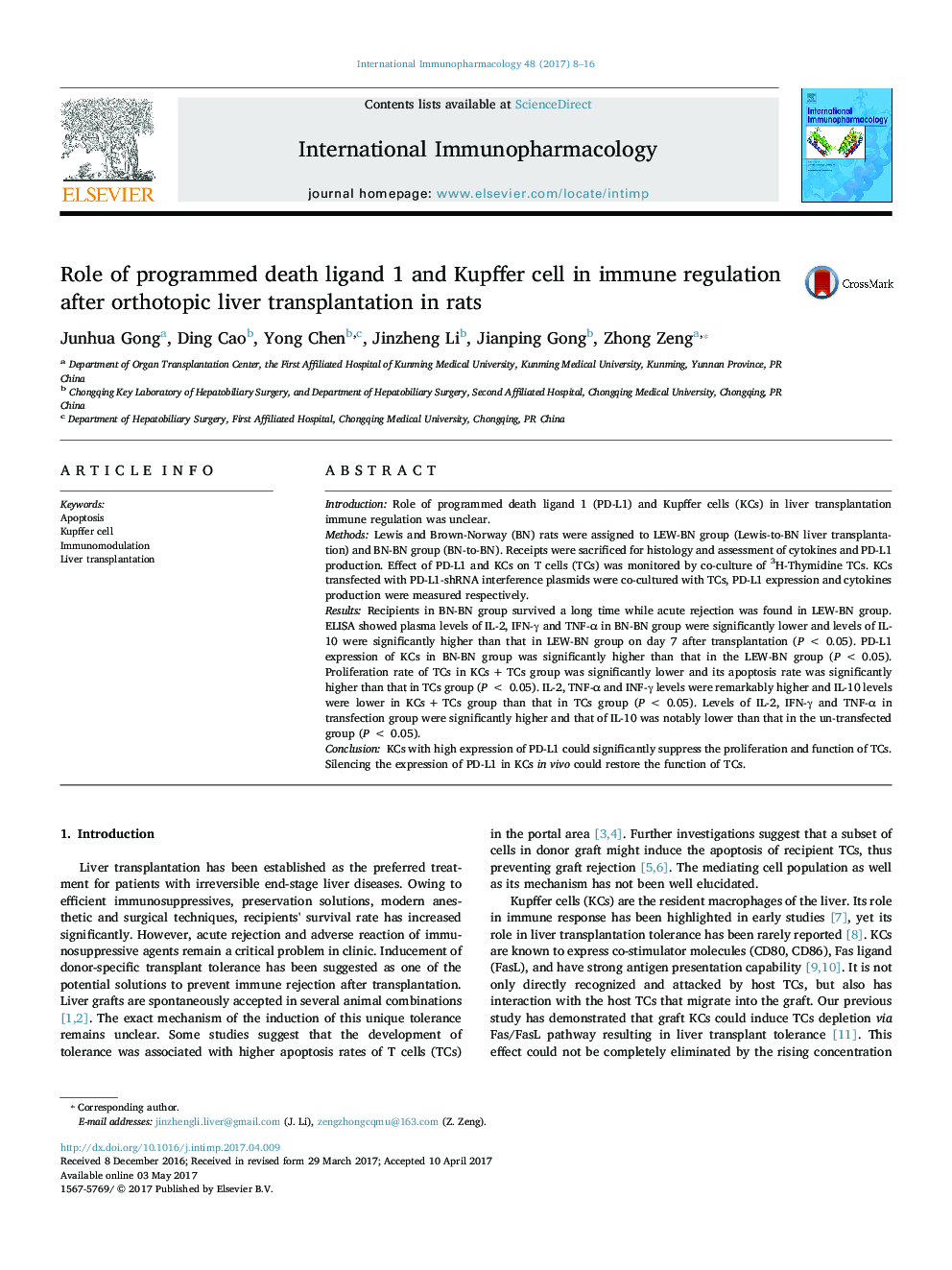| Article ID | Journal | Published Year | Pages | File Type |
|---|---|---|---|---|
| 5555392 | International Immunopharmacology | 2017 | 9 Pages |
â¢KCs with high expression of PD-L1 could significantly suppress the proliferation and function of T lymphocytes and promote apoptosis of T lymphocytes.â¢KCs with high expression of PD-L1 could remarkably prevent acute rejection and prolong survival time in recipient after liver transplantation.
IntroductionRole of programmed death ligand 1 (PD-L1) and Kupffer cells (KCs) in liver transplantation immune regulation was unclear.MethodsLewis and Brown-Norway (BN) rats were assigned to LEW-BN group (Lewis-to-BN liver transplantation) and BN-BN group (BN-to-BN). Receipts were sacrificed for histology and assessment of cytokines and PD-L1 production. Effect of PD-L1 and KCs on T cells (TCs) was monitored by co-culture of 3H-Thymidine TCs. KCs transfected with PD-L1-shRNA interference plasmids were co-cultured with TCs, PD-L1 expression and cytokines production were measured respectively.ResultsRecipients in BN-BN group survived a long time while acute rejection was found in LEW-BN group. ELISA showed plasma levels of IL-2, IFN-γ and TNF-α in BN-BN group were significantly lower and levels of IL-10 were significantly higher than that in LEW-BN group on day 7 after transplantation (P < 0.05). PD-L1 expression of KCs in BN-BN group was significantly higher than that in the LEW-BN group (P < 0.05). Proliferation rate of TCs in KCs + TCs group was significantly lower and its apoptosis rate was significantly higher than that in TCs group (P < 0.05). IL-2, TNF-α and INF-γ levels were remarkably higher and IL-10 levels were lower in KCs + TCs group than that in TCs group (P < 0.05). Levels of IL-2, IFN-γ and TNF-α in transfection group were significantly higher and that of IL-10 was notably lower than that in the un-transfected group (P < 0.05).ConclusionKCs with high expression of PD-L1 could significantly suppress the proliferation and function of TCs. Silencing the expression of PD-L1 in KCs in vivo could restore the function of TCs.
